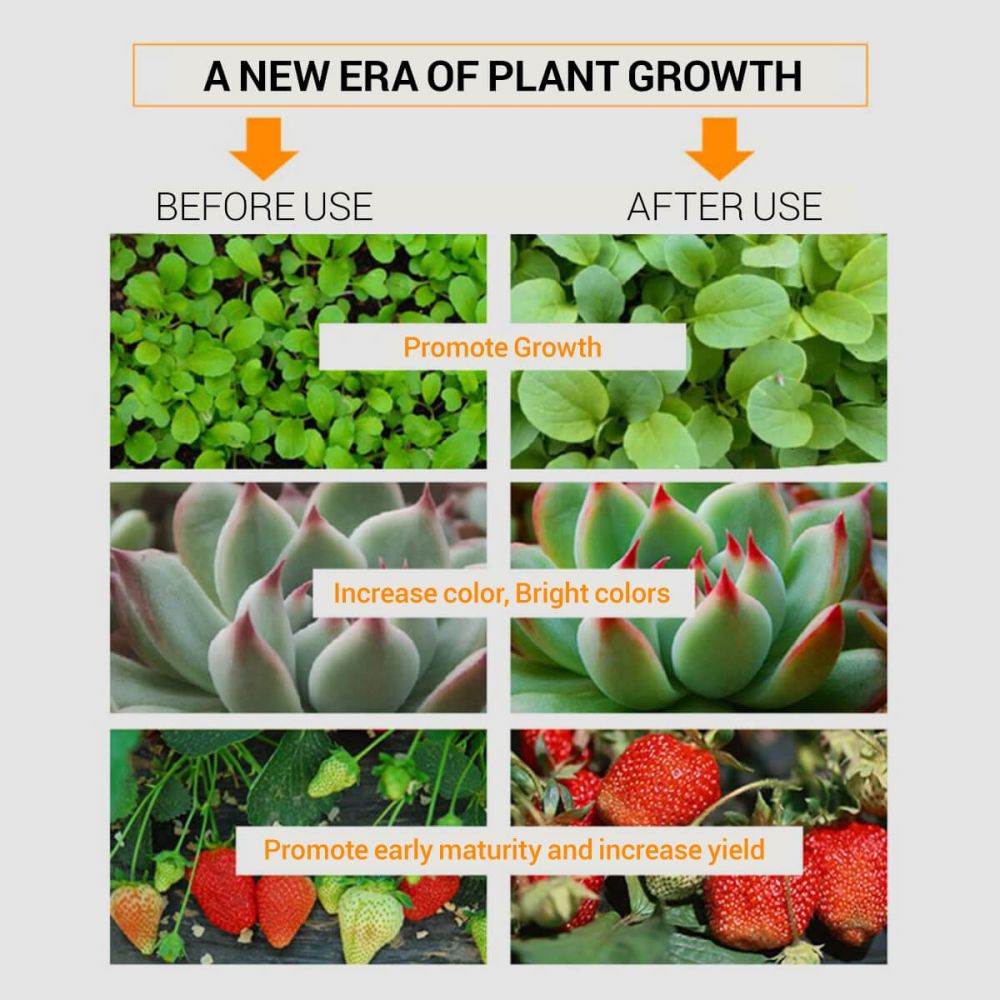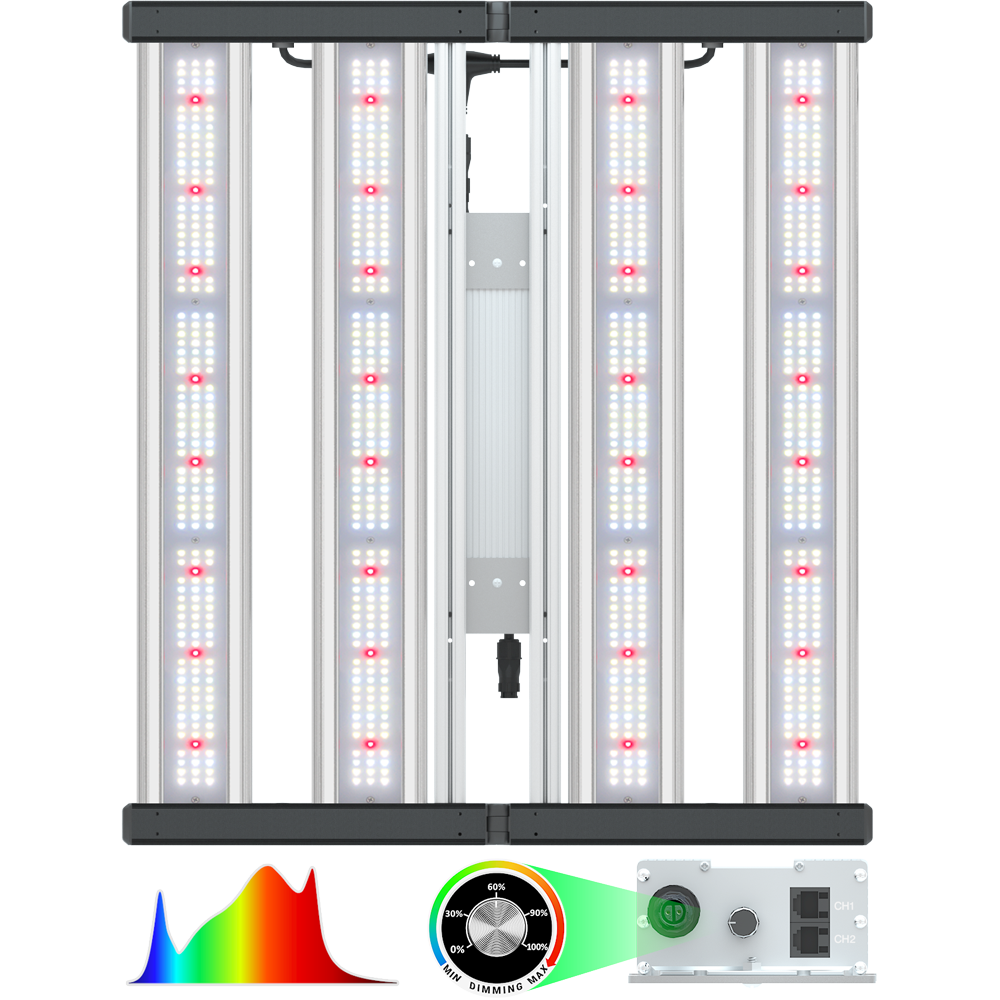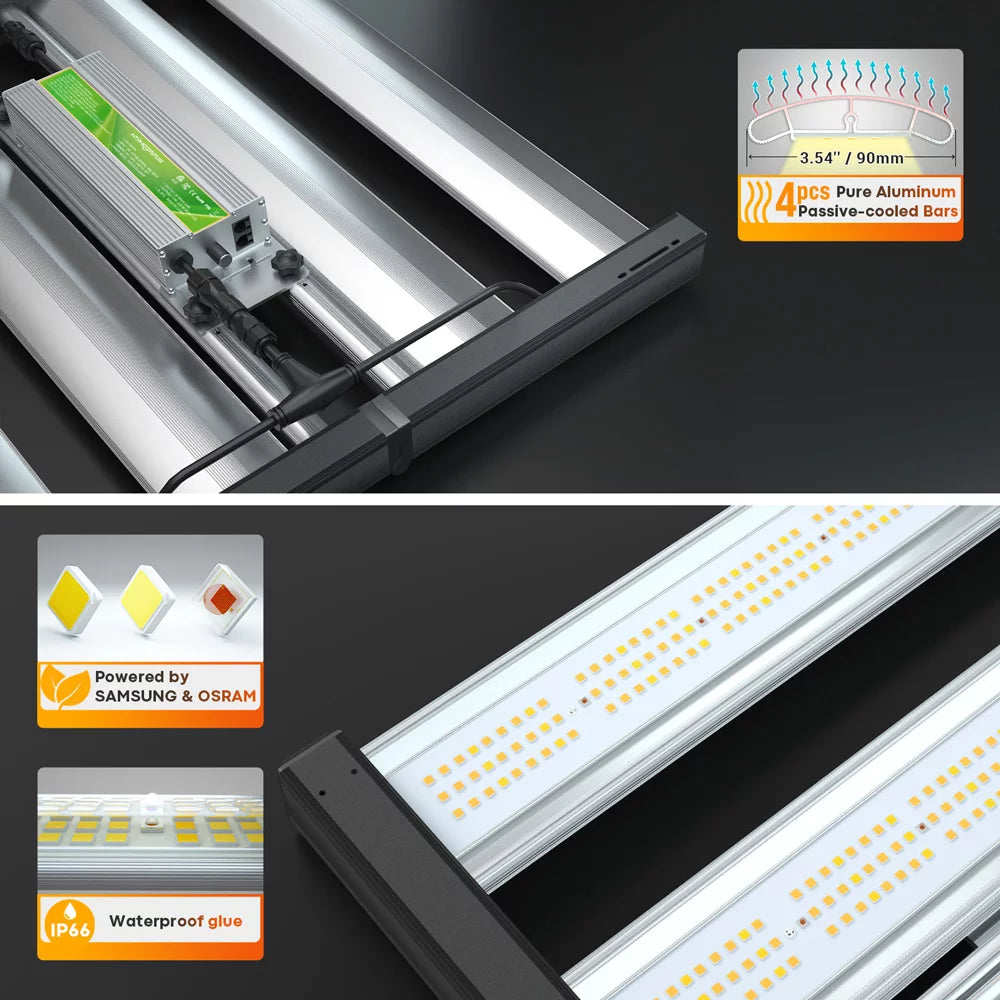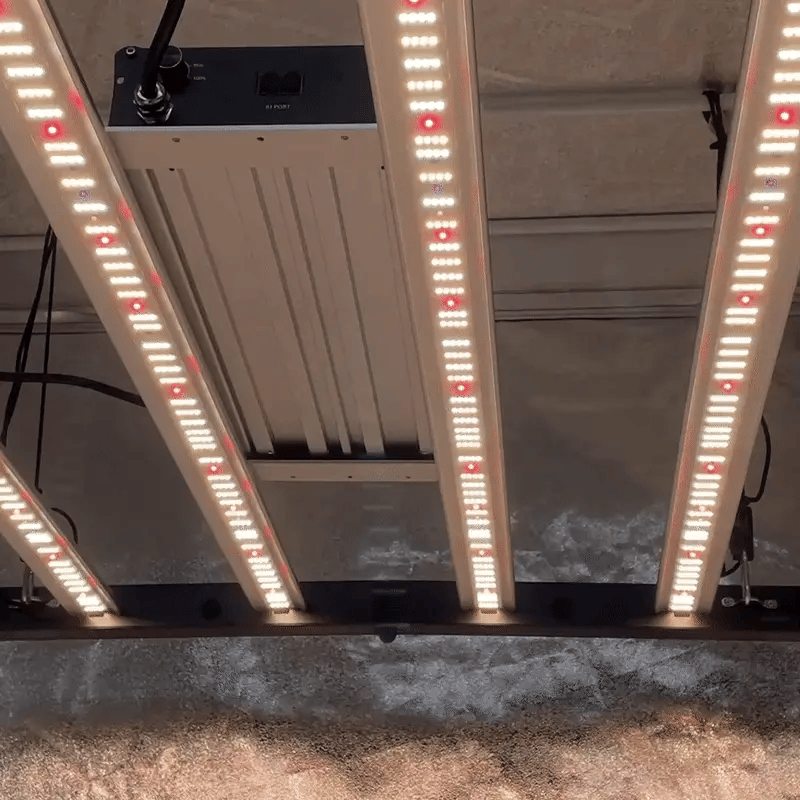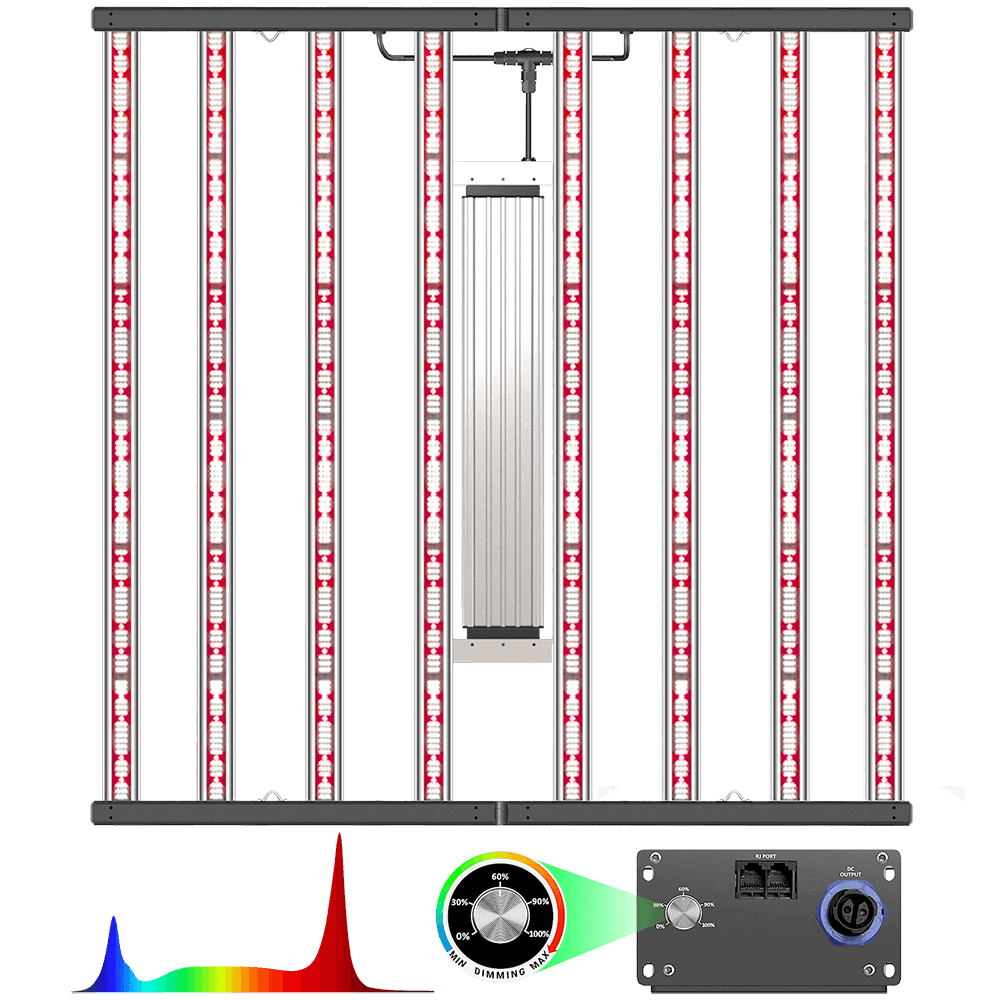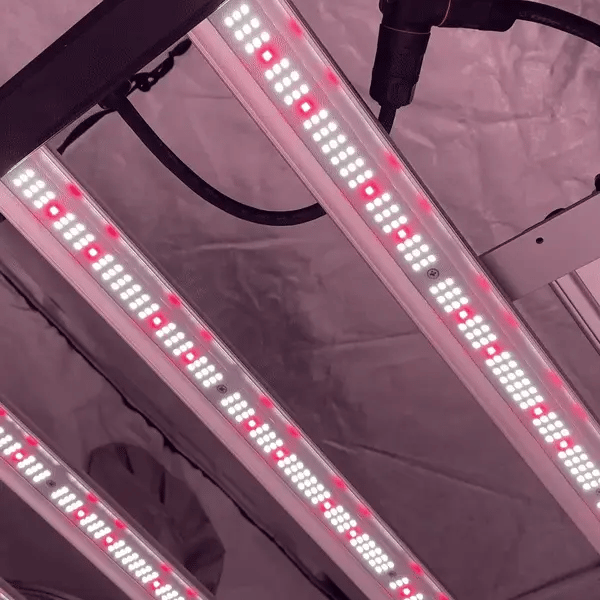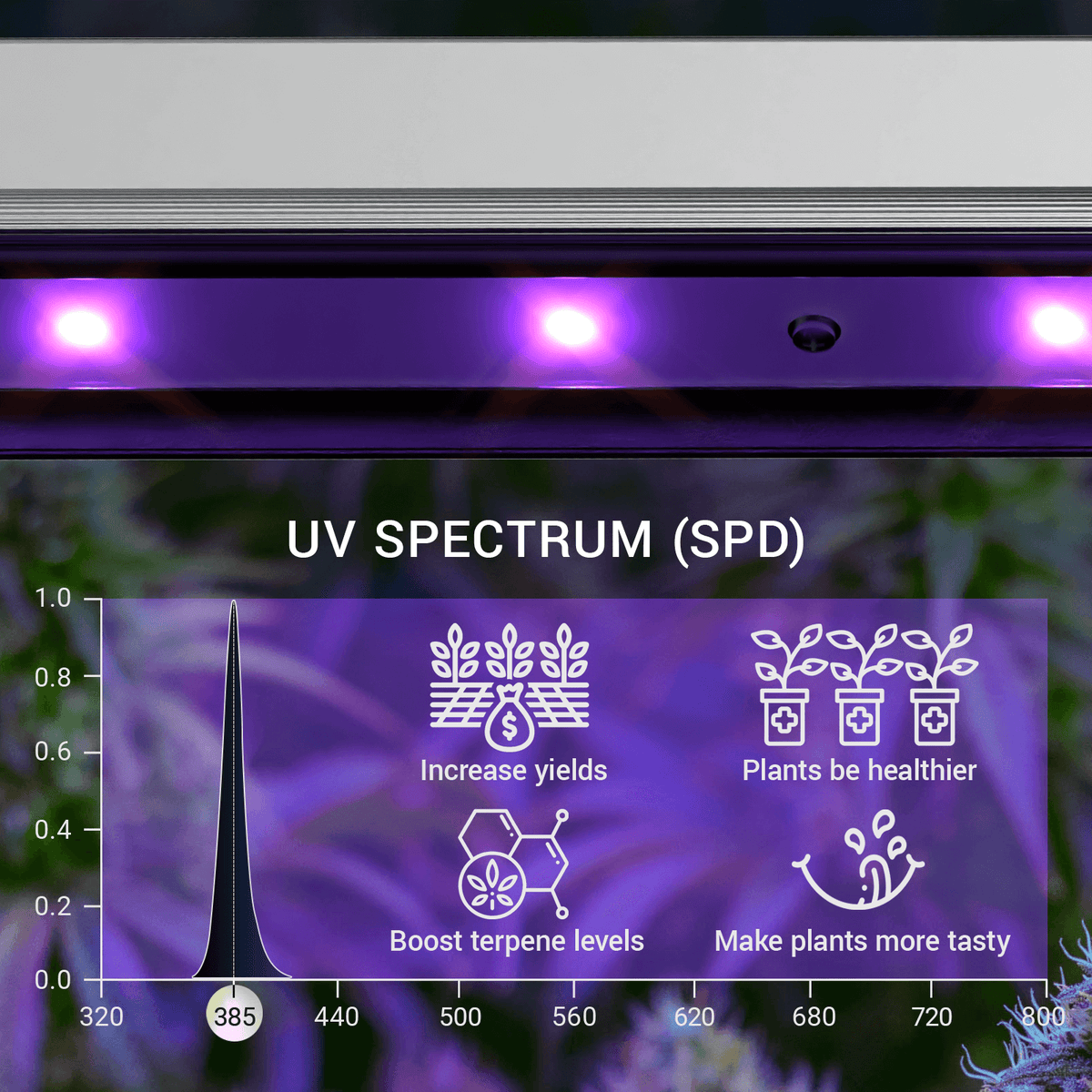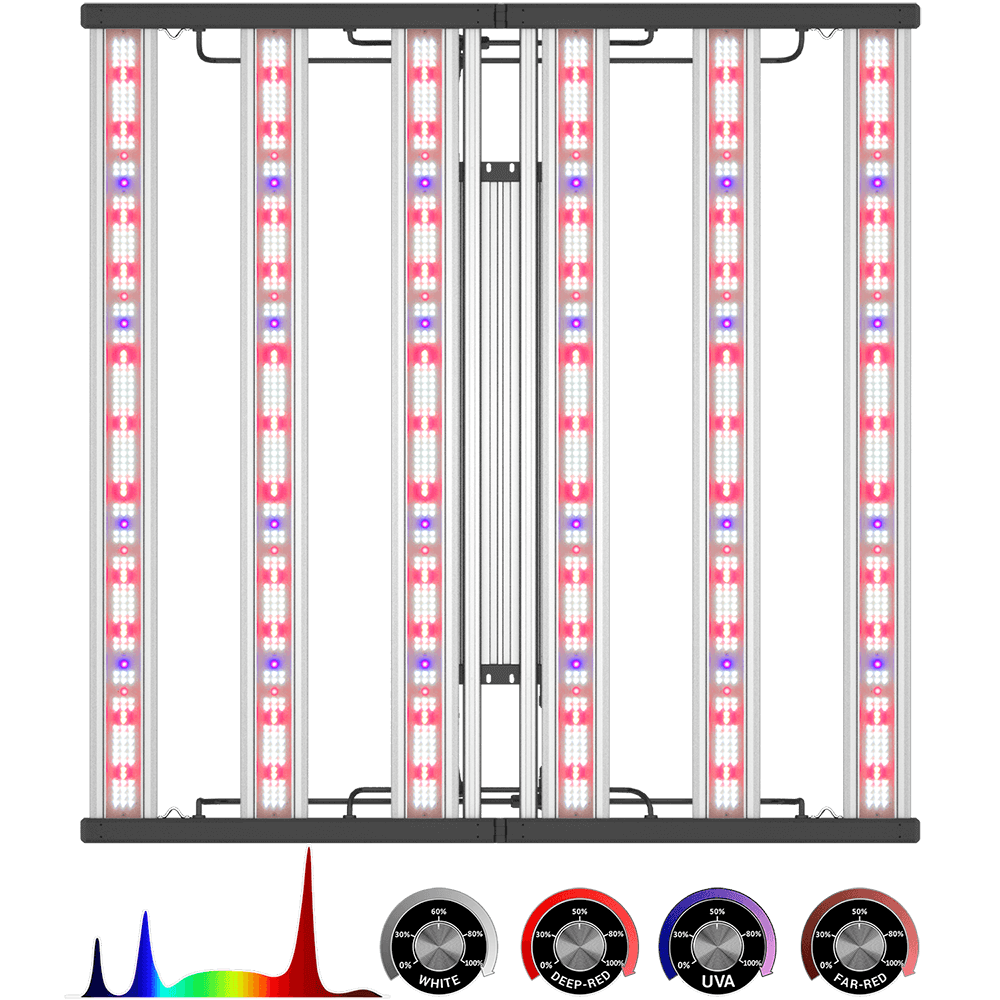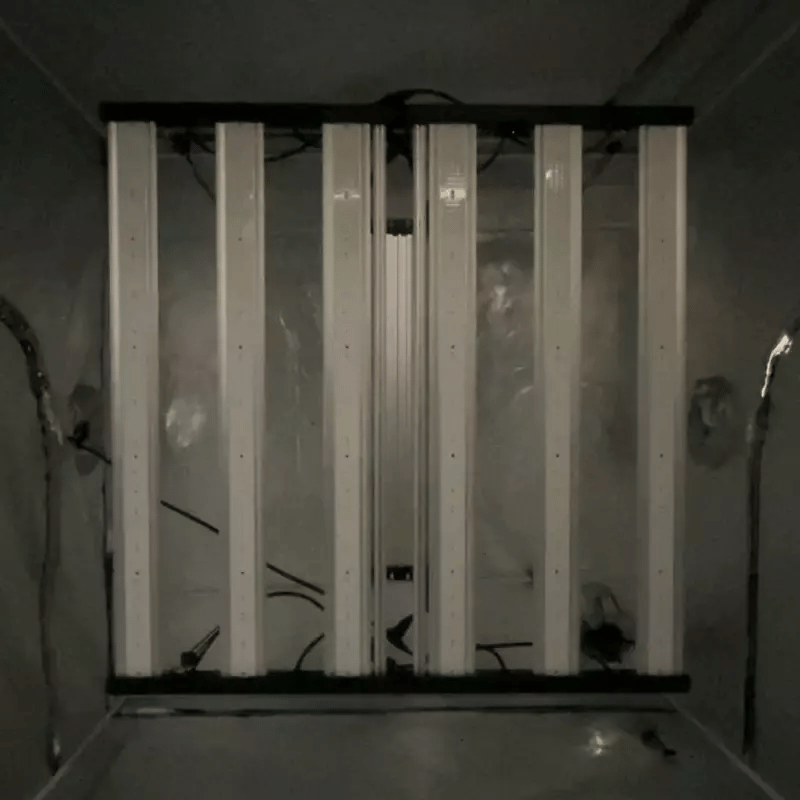INTRODUCTION TO THE SPECTRUM OF PRO-720 LED
● We need to know some basics about the spectrum before introducing the spectrum of the PRO-720✿ What Is The Light Spectrum?
● The sun emits energy in the form of solar radiation including gamma rays, x-rays, ultraviolet light, visible light, and even radio waves. Life on Earth is only possible because the ozone layer blocks this radiation, and reflects most of it back into space. This filtering process only allows wave lengths between 300nm and 1100nm to reach our plants and an even smaller portion of this light is visible to us. It is often referred to as the light spectrum, color spectrum or visible spectrum, and ranges from 380nm to about 750nm.

● UV light spectrum, which is not visible to the human eye, is outside the PAR range (180nm-400nm). Around 10% of the sun’s light is ultraviolet, and like humans, plants can be harmed from overexposure to UV light. Categorized into 3 types, UV-A (315-400 nm), UV-B (280-315 nm), and UV-C (180-280 nm).
● While the benefits of ultraviolet light use in horticulture are still being researched, UV light is often associated with darker, purple coloring – in fact, small amounts can have beneficial effects on color, nutritional value, taste, and aroma.
● Research shows environmental stress, fungus, and pests can also be reduced using controlled amounts of UV. Research has emerged that suggests an increase in cannabinoids like THC (5) in Cannabis can be achieved using UV-B light (280nm – 315nm).
✿ Blue Light Spectrum (400–500 nm)
● Blue light spectrum is widely responsible for increasing plant quality – especially in leafy crops. It promotes the stomatal opening – which allows more CO2 to enter the leaves. Blue light drives peak chlorophyll pigment absorption which is needed for photosynthesis.
● It's essential for seedlings and young plants during vegetative stages as they establish a healthy root and stem structure – and especially important when stem stretching must be reduced.
✿ Green Light Spectrum (500–600 nm)
● Green wavelengths have been somewhat written off as less important for plant photosynthesis given it’s (in)ability to readily absorb chlorophyll compared to red or blue light spectrums. Nonetheless, green is still absorbed and used for photosynthesis; in fact, only 5-10% is actually reflected – the rest is absorbed or transmitted lower down! This is due to green light’s ability to penetrate a plant's canopy.
● In greenhouses, due to the presence of sunlight, supplementing green light spectrum using LED grow lights would be less important compared to crops are grown solely indoors – like Cannabis or vertical crop farming.
✿ Red Light Spectrum (600–700 nm)
● Red light is known to be the most effective light spectrum to encourage photosynthesis as it's highly absorbed by chlorophyll pigments. In other words, it sits in the peaks in chlorophyll absorption. Red light wavelengths (particularly around 660nm) encourage stem, leaf, and general vegetative growth – but most commonly, tall, stretching of leaves and flowers.
● A balanced pairing with blue light is necessary to counteract any overstretching, like disfigured stem elongation. It’s important to consider that while red is the most responsive light spectrum for plants, its efficacy really steps in when in combination with other PAR wavelengths.
✿ Far-red Light Spectrum (700–850 nm)
● There are a few ways far-red can affect plant growth – one is to initiate a shade-avoidance response. At around 660nm (deep red) a plant senses bright sunlight exposure. From 730nm and beyond – i.e. a higher ratio of far-red to red light, a plant will detect light “shade” from another plant or leaves higher up the canopy, so stretching of stems and leaves occurs.
● Far-red can be very useful to promote flowering, and in certain plants, increase fruit yield (6). In short-day plants like Cannabis, which rely on longer periods of darkness, 730nm can be used at the end of a light cycle to promote flowering. Many growers are experimenting with interrupting the dark cycle with bursts of red light to boost growth and flowering.
✿ Colour Temperature (Kelvin) And How It Affects Your Plants
● When shopping around for a grow light, you will likely come across the term "colour temperature". This is essentially a way to describe the light appearance provided by a bulb, and is measured in Kelvin (K).
● Colour temperature doesn’t mean the physical temperature of your light, but the degree of warmth or coolness of a light source—the “visual temperature”. When a light has a higher degree of Kelvin, it has a more blueish appearance. Thus, we call it a “cool” light. On the other hand, a bulb with a lower degree of Kelvin emits a “warmer”, reddish light. Most LED grow lights for cannabis have a white light color temperature range of 3000K-6500K.
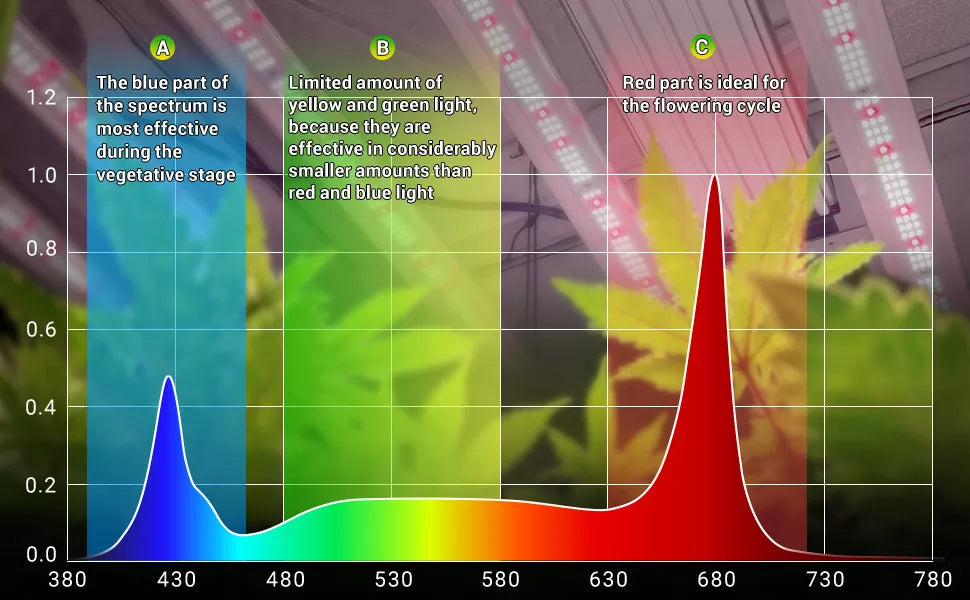
✿ When you know all of above, let's move your eyes on the spectrum of PRO-720
● This is really nice spectrum, it is built by 2592pcs white 6500k & 192pcs red 660nm diodes, and it has enough blue to ensure your plants capable of full photosynthesis and grow thick stems and roots, In the flowering stage, plenty of red maximizes the yields ,in fact it's perfect for flowering plants.
● You may notice there has little green and yellow color in the spectrum, yes, that's because plants need little green and yellow lights.
● The high ratio of green light and yellow light will cause waste of energy, so by reducing the ratio of green light and yellow light, PRO-720 has higher efficiency-3.0μmol/J.

